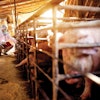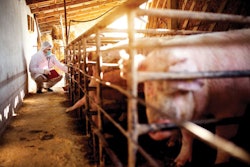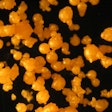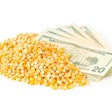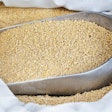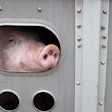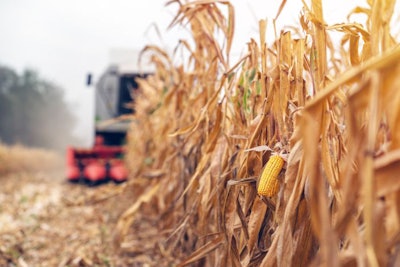
Farmers are still harvesting millions of acres of corn that survived last year’s early winter
On June 1, North Dakota farmer Randy Melvin harvested the last of his 2019 corn crop, 95% of which survived an early winter and late spring.
“In the fall, we had a very low test weight, very immature corn,” he said. “So in November and December when we were evaluating this, it was an easy decision. And after harvesting last night, I’m thankful we did —all but two varieties saw a substantial increase in test weight.”
Melvin, who grew more than 1,000 acres of corn last year on his Buffalo, North Dakota, farm, said most of his crop was also in good quality despite having stood in the field over the winter. It was a little on the dry side at harvest, he said; while he would have preferred to bring the crop in during March or April, wet spring conditions didn’t permit.
This is the second time in his 25-year career that Melvin has allowed his corn to stand over the winter, but he’s far from the only farmer who made this choice after the rough 2019 growing season. Based on U.S. Department of Agriculture (USDA) crop harvest and planting reports, agricultural economics professor Scott Irwin estimates that a little over 2.5 million acres of U.S. corn survived the 2019-20 winter to be harvested this spring.
North Dakota saw the bulk of the late harvest, with just under 2 million acres left to stand through the winter, according to Irwin, a professor at the University of Illinois. Another 546,000 acres remained unharvested as of early December in Minnesota.
“So it was an interesting test of the hardiness of modern corn hybrids,” Irwin said, “because that stuff in North Dakota took a huge blizzard in October, lots of snow all winter, lots of rain, huge winds, and … I don’t think they lost more than a couple hundred acres.
“And on what was harvested, the yield did not go down,” he added.
Unique circumstances
Brenda Elmer, executive director of the North Dakota Corn Growers Association, said members of the association don’t see the spring harvest as a “new norm,” but as the result of unique circumstances. But while the survival of last year’s crops is good news for farmers, finances, the late harvest, wet spring and economic conditions triggered by the novel coronavirus (COVID-19) pandemic is interfering with the planting of this year’s corn crop.
Members of the association have reported seeing more combines in the fields than planters some days this spring, Elmer said. She estimated that only 75% of the state’s intended acres had been planted by the end of May.
Melvin, who is also the president of the North Dakota Corn Growers Association, confirmed that he has only planted about half his acreage so far this year. Normally, he said, his corn is in the ground by May 10, but this year he said he did not begin to plant until May 15.
“Spring for us has been extremely wet,” he said. “It’s finally dried off over the last two weeks, but we did not start planting until the 15th of May.”
But the delay has given North Dakota farmers a chance to consider the ramifications of COVID-19 and, in some cases, make last-minute decisions about their choice of crops. Depending on how the next 10 days go, Melvin said, he may consider planting more beans instead of corn this year, or he may opt to take prevented planting.
“We’ll get our edible beans in first, and then weight our options between soybeans, or some producers are going with sunflowers,” he said.
While conditions outside their control may be forcing these conversations, Melvin said many North Dakota farmers were ready to take a break from growing corn anyway.
“It almost feels like a corn hangover,” he said. “It’s just been a long year and a half, and I think a little bit of a break wouldn’t be bad.”
